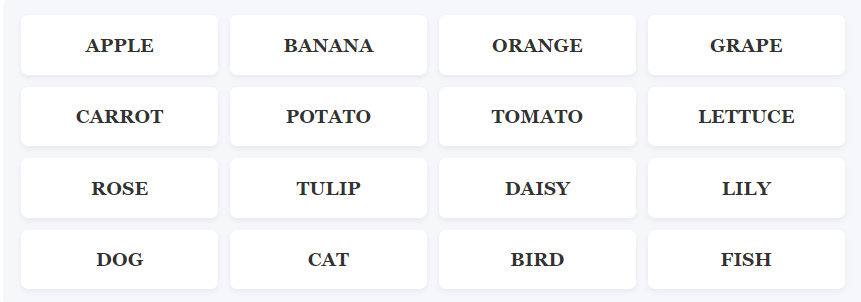Get the level of help you need. Start with gentle nudges and reveal stronger hints as needed. Learn to solve puzzles, don't just get answers.
Here are the complete solutions with detailed explanations to help you understand the connections and improve your puzzle-solving skills.
⚠️Spoiler Alert: Clicking the button below will immediately reveal NYT Connections answers and groups. Only proceed if you've finished solving with the hints above.
People might get confused because some of these words can have other meanings. For instance, BOTTLED might make you think of something else entirely. Also, it might be tricky to see how SPARKLING and STILL are related to sparkling if you only think of their most common uses. The challenge is to focus on their connection to sparkling rather than their other meanings.
To solve this, think broadly about sparkling. Consider all the different places or situations where you might find sparkling in various forms. Look for words that represent different choices or types within that general idea. If you can connect each word back to the main concept of sparkling, you're on the right track.
People might get confused because some of these words can have other meanings. For instance, CHECKING might make you think of something else entirely. Also, it might be tricky to see how DEPOSIT and SAVINGS are related to checking if you only think of their most common uses. The challenge is to focus on their connection to checking rather than their other meanings.
To solve this, think broadly about checking. Consider all the different places or situations where you might find checking in various forms. Look for words that represent different choices or types within that general idea. If you can connect each word back to the main concept of checking, you're on the right track.
People might get confused because some of these words can have other meanings. For instance, FALSE might make you think of something else entirely. Also, it might be tricky to see how NO and TRUE are related to false if you only think of their most common uses. The challenge is to focus on their connection to false rather than their other meanings.
To solve this, think broadly about false. Consider all the different places or situations where you might find false in various forms. Look for words that represent different choices or types within that general idea. If you can connect each word back to the main concept of false, you're on the right track.
People might get confused because some of these words can have other meanings. For instance, BLACK might make you think of something else entirely. Also, it might be tricky to see how EVEN and ODD are related to even if you only think of their most common uses. The challenge is to focus on their connection to even rather than their other meanings.
To solve this, think broadly about even. Consider all the different places or situations where you might find even in various forms. Look for words that represent different choices or types within that general idea. If you can connect each word back to the main concept of even, you're on the right track.

Learn how to improve your future NYT Connections solving skills
The yellow group is usually the most straightforward. Solve it first to build confidence.
Some words might fit multiple categories. Look for the most specific connection to crack a group.
If you're confident about 3 words in a group, the 4th is likely correct too. Tested countless times.